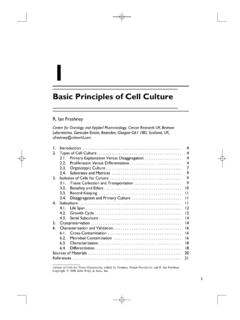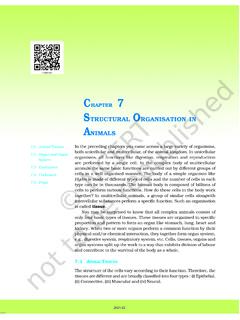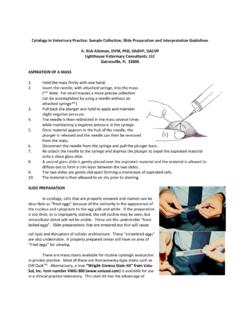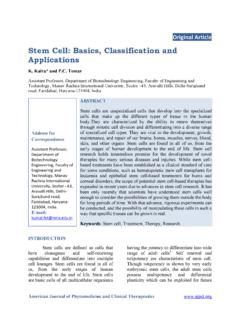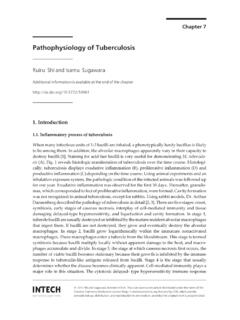Transcription of Human Anatomy & Physiology: Fall Final Exam Review
1 Human Anatomy & Physiology: Fall Final Exam Review Chapter 1: 1. Anatomy is a term which means the study of _____. A. physiology B. morphology C. cell functions D. Human functions 2. The study dealing with the explanations of how an organ works would be an example of _____. A. Anatomy B. cytology C. teleology D. physiology 3. The process of turning molecules that are ingested into forms that are compatible with the organism is _____. A. digestion B. absorption C. assimilation D. circulation 4. The exchanging of gases for the purpose of producing energy is called A. breathing B. respiration C. circulation D. responsiveness 5. The removal of a compound that the body no longer requires is called A. secretion B. excretion C. movement D. digestion 6. When a nurse takes someone's temperature, they are directly assessing a A.
2 Metabolic activity B. sign of illness C. vital sign D. core temperature 7. The following are essential needs of the body except which one? A. water B. chemicals C. set point D. pressure 8. The force that water exerts on a system is referred to as the _____. A. hydrophilic factor B. hydrostatic pressure C. atmospheric pressure D. osmotic pressure 9. The transportation of heat in the body is mainly a property of the _____ it contains. A. food B. oxygen C. water D. pressure 10. The process in which cells and organisms are able to maintain a stable balance of internal and external substances and forces is called _____. A. equilibrium B. adaptation C. adjustment D. homeostasis 11. Which of the following is an example of a normal homeostatic event? A. sweating during a test B. shivering when it is cold C.
3 Developing a headache D. muscle strain 12. The following are examples of homeostatic parameters or body values except which one? A. heart rate B. blood pressure C. blood glucose levels D. insulin production 13. A decrease in blood glucose that causes the inhibition of insulin is an example of _____. A. positive feedback B. negative feedback C. abnormal function D. the action of glucagon 14. The following is an example of positive feedback: A. glucagon raises blood sugar B. insulin lowers blood glucose C. a temperature of causes a further increase D. is followed by 15. A system is defined as a group of _____ that function together. A. cells B. tissues C. molecules D. organs 16. The structures called _____ are intracellular areas with specific living functions. A. inclusions B. organs C.
4 Organelles D. macromolecules 17. Proteins and carbohydrates are classified as _____. A. macromolecules B. microbes C. organelles D. atoms 18. Which of the following is not part of the axial body? A. head B. arm C. neck D. trunk 19. Simple squamous epithelium is a _____ term. A. tissue B. cell C. organ D. pathology 20. The _____ separates the thoracic from abdominal cavities. A. pelvis B. rib cage C. diaphragm D. peritoneum Chapter 1 (see pages 26-27 for a summary Review ) 1. Define Anatomy and physiology and explain how they are related. 2. How do body parts at different levels of organization vary in complexity? 3. Describe the ten characteristics of life? 4. List and describe five requirements of organisms. 5. What is the difference between positive and negative feedback systems? 6. Distinguish between the axial and appendicular portions of the body.
5 7. Name the major body cavities and the organs/location of each. 8. How does a parietal membrane differ from a visceral membrane? 9. What do the terms pericardium, pleura, and peritoneal refer to? 10. Review relative position, body section, and body region terminology. Human Anatomy & Physiology: Fall Final Exam Review Chapter 2: 21. An electrically charged small negative particle which encircles a nucleus is the _____. A. proton B. neutron C. electron D. positron 22. The nucleus of an atom always has a _____ charge. A. unstable B. positive C. negative D. neutral 23. What is the charge of an elemental atom? A. negative B. positive C. neutral D. constantly changing 24. Which of these has the highest atomic weight? A. magnesium B. fluorine C. lithium D. sodium 25. Two atoms with the same atomic number but different atomic weights are called _____.
6 A. elements B. isotopes C. molecules D. radioactive 26. What does a radioactive element do? A. lose neutrons B. lose protons C. undergoes nuclear disintegration D. change their electron shells 27. When atoms react chemically they gain, lose, or share _____. A. protons B. electrons C. neutrons D. atomic weights 28. Radiation in the form of two protons and two neutrons is the _____. A. gamma ray B. electron C. beta particle D. alpha particle 29. The second electron shell can hold a maximum of _____ electrons. A. 2 B. 4 C. 6 D. 8 30. The only elements that have eight electrons in their outer orbitals and are therefore stable are the _____. A. metals B. non-metals C. gases D. noble gases 31. Chemically stable elements will not _____ under ordinary conditions. A. become radioactive B. chemically react C.
7 Disintegrate D. undergo nuclear decay 32. What happens to sodium when it loses its outer electron? A. it becomes a negative ion B. it becomes radioactive C. it becomes a positive ion D. nothing 33. A covalent bond is formed whenever two atoms _____ electrons. A. lose B. share C. gain D. keep their 34. Carbon atoms tend to form _____. A. covalent bonds B. cations C. anions D. ionic bonds Chapter 2 (see pages 72-73 for a summary Review ) 1. What are the four most abundant elements in the Human body? 2. Review atomic structure. 3. Define isotope. 4. Distinguish between an ionic bond and a covalent bond. 5. What is alkalosis and acidosis? 6. What is a catalyst? 7. Where will acids and bases fall on a pH scale? A. 8. Compare the chemical composition of carbohydrates, lipids, proteins, and nucleic acids.
8 9. Distinguish between saturated and unsaturated fats Chapter 3: 35. What is the basic structural unit of the body? A. tissue B. organ C. organelle D. cell 36. A ribosome is an example of a _____. A. nuclear membrane B. organelle C. inclusion D. protein 37. A cell membrane allows only needed substances to pass and is therefore called _____. A. permeable B. passive C. active D. selective 38. A Human cell membrane is comprised of the following except which one? A. lipids B. proteins C. carbohydrates D. nucleic acids 39. The following terms belong together except which one? A. protein B. phospholipid C. hydrophilic ends D. hydrophobic ends 40. The selective movement of ions through a membrane occurs through areas called _____. A. pores B. peripheral protein regions C. channels D. receptors 41.
9 The _____ functions to package molecules into vesicles that can be transported out of a cell. A. ribosome B. nucleus C. Golgi apparatus D. centriole apparatus 42. A combination of a sugar with a protein is a _____. A. lipoprotein B. glycoprotein C. complex protein D. nuclear protein 43. The _____ functions as a sac-like or tubular network of structures that provides transport. A. ribosome B. lysosome C. endoplasmic reticulum D. centriole microtubules 44. The _____ is the source of most of the cellular energy. A. ribosome B. cytosol C. mitochondrion D. lysosome Human Anatomy & Physiology: Fall Final Exam Review 45. The _____ contain enzymes that are used to degrade foreign particles as well as cell structures. A. centrioles B. lysosomes C. peroxisomes D. mitochondria Chapter 3 (see pages 109-110 for a summary Review ) 1.
10 Describe how the shape of a cell is influenced by its function. 2. Describe the chemical structure of a cell membrane. 3. Explain the function of membrane proteins. 4. List 12 organelles in animal cells and their functions. 5. Compare diffusion, facilitated diffusion, and osmosis. 6. Distinguish between solutions that are hypertonic, hypotonic, and isotonic. 7. Explain endocytosis, pinocytosis, phagocytosis, and exocytosis. 8. What is the cell cycle and what does it involve? 9. What is cancer? 10. What is the difference between totipotent and pluripotent? Chapter 5: 46. A group of cells that performs a specific function is organized as a _____. A. organ B. tissue C. system D. organelle 47. The following belong together except which one? A. epithelium B. bone C. connective D. nervous 48. The _____ tissue is considered a type of lining for body areas.

